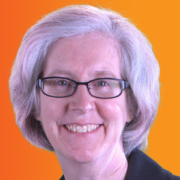Attracting and Retaining Women at Boston Consulting Group
By Liz O’Donnell (Boston)
Something is working. The number of women at the Boston Consulting Group (BCG) has doubled over the last five years and now three women sit on the firm’s 13 member Executive Committee, up from none in about the same time frame. Women represent 33 percent of the firm’s approximate 4,300 consultants. These numbers are inching towards the kind of critical mass a company needs to realize the benefits of gender diversity.
How is Boston Consulting Group, a business built on the grueling model of consulting and billable hours, able to not just attract and retain, but also promote women? How does it make the Fortune magazine list of “100 Best Companies to Work For” and the Working Mother magazine “Best Company for Working Mothers” lists?
Accommodating Consultants Through Life’s Transitions
Lucy Brady, a Chicago-based partner with BCG and head of women’s recruiting in the Americas, says the key is taking a long term view with regard to the firm’s “most important assets” — its people.
“(The firm) hires people with a long term view. We recognize that people will go through various life stages,” says Brady. “So we need to be flexible and figure out how to accommodate them as they go through life transitions.”
Brady both understands this, and has experienced it, first hand. She has been with BCG for 12 years and in that time she has had children, moved to a part-time schedule, made partner and added the role of recruiting to her client service responsibilities. In fact she has worked a reduced schedule eight of her 12 years at the firm – three days in the office or at a client site and one day a week at home.
“When my oldest son was born, I had no idea what to expect,” says Brady. “I tried to anticipate, but you don’t know until you are living with it for at least two months. I loved being a mom but I also loved my job and working hard.”
Brady talked to the head of her office about working part time — at the time there were not many people at BCG working reduced schedules. She also asked the partners with whom she worked to let her know if her new schedule wasn’t working. As she went from case to case, Brady says she transitioned from “skeptical to cautiously optimistic to convinced” that her new schedule could work.
Kate Protextor, a principal in BCG’s Chicago office, has also had very positive experiences as she moves through major life changes with the firm. At one point, Protextor’s spouse also worked for the firm. “(The firm) was amazing about it. We had very separate staffing and fair evaluations of our work. There were no issues on that front.”
Protextor has also given birth to two children while working for BCG and she is currently pregnant with her third. “What was particularly impressive was that during my maternity leave, other women professionals at the firm reached out to me as I was reviewing options.”
Protextor says she was contemplating returning part-time or full time, and staying in a client service role or taking an internal role within the firm. “It’s hard to come back after your first child,” she says. “BCG gave me the time to learn how to do it.”
Protextor says she doesn’t know if her colleagues reached out on their own or as part of an organized effort. Either scenario is possible. BCG takes its diversity programs and outreach seriously. Sulakshana Bala, BCG’s North American Diversity Program Director, says, “We realized very early on that affiliation was a key driver — a bigger driver for women. When women leave they often don’t have a strong sense of affiliation, so we focus on how we can make sure our women do.”
New CEO Brought New Life to Women’s Initiative
According to Bala, the women’s initiative at BCG was relaunched in 2003 under the current CEO. “At that stage BCG went into study and diagnostics mode. We looked at where we are coming from, where do we want to go and why women are important for our business:
Some of the programs run by the Women’s Initiative at BCG are:
- Networking events at the local, regional, and global level
- Formal mentoring systems
- Appointment of senior women in each office to guide women’s development and cooperate with the firm’s Career Development
- Recruitment and retention programs
Said Bala, “The Women’s Initiative is part of our DNA. When I look at managing the program today, what I find is it’s very much integrated into the BCG fabric — it doesn’t stand in isolation. The entire BCG leadership is engaged and recognizes the importance of women.”








The Women’s Initiative is part of our DNA. When I look at managing the program today, what I find is it’s very much integrated into the BCG fabric — it doesn’t stand in isolation. The entire BCG leadership is engaged and recognizes the importance of women.